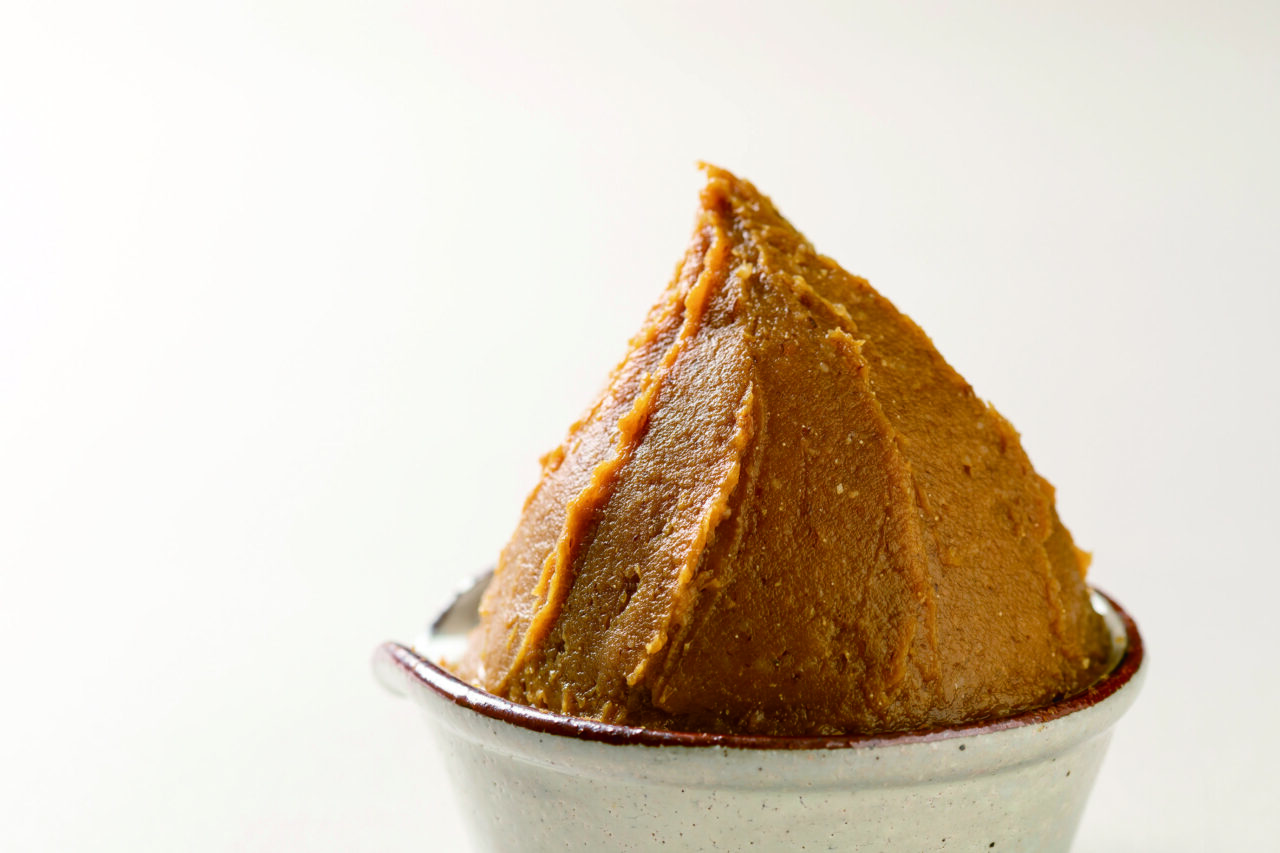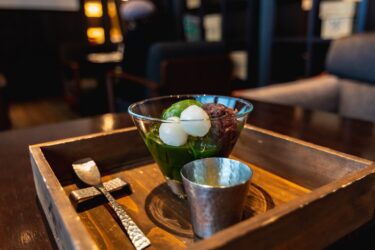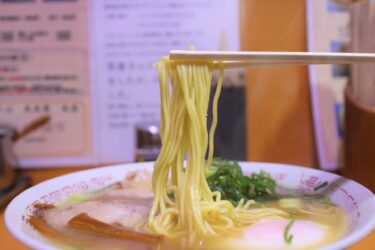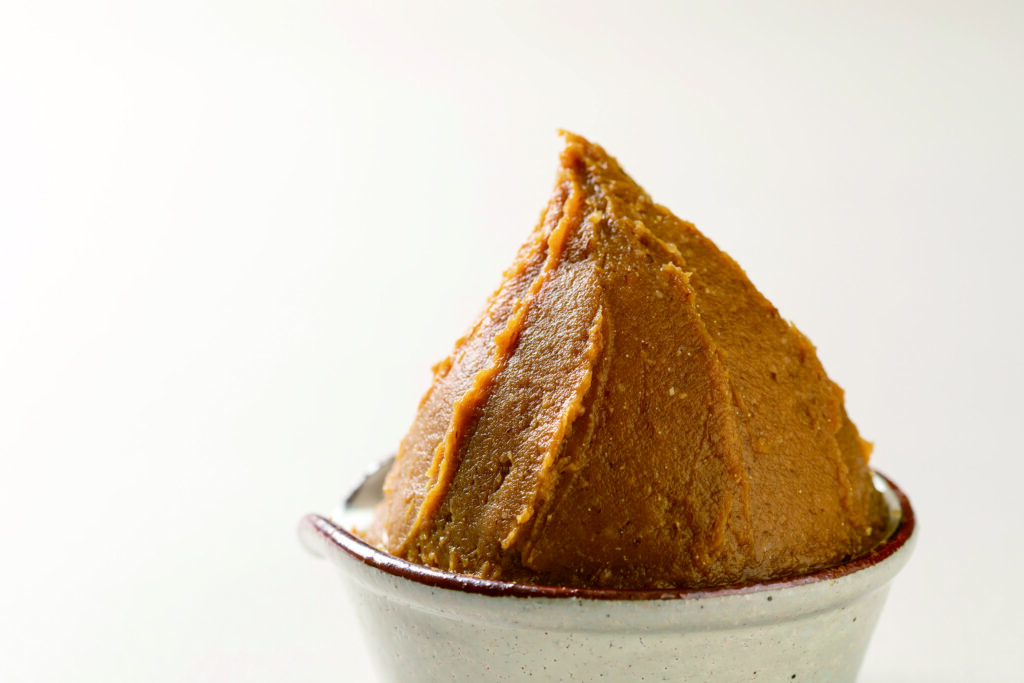
Nothing is more comforting than sipping on a steaming bowl of miso soup. The obvious key ingredient here, miso, is a commonly used fermented paste made from soybeans, salt and rice kōji, a starter culture unique to Japan. Miso stems from ancient Chinese salt-cured soybeans, introduced to Japan some 1,300 years ago. It evolved into a paste-like form similar to what we have now by the medieval period, recognized as a source of nutrition among samurais and Zen monks abstaining from eating meat.
The miso kept in the fridges of most homes today is store-bought. Until the breakout of the second world war, however, the average family would prepare their own homemade miso. Bragging to each other about their household miso was a daily occurrence, so much so that there is an expression temaemiso (homemade miso) meaning to praise oneself.
Today, households here and there still carry on the tradition, like in the city of Maizuru, a fishing town in northern Kyoto Prefecture. It is home to Ōsakaya Kōjiten, an establishment with a history of over 200 years that specializes in producing fresh (as opposed to dried) kōji for home use. They also have a location in Kyoto City with a café, just minutes away from the Heian Jingū shrine. Says the 10th-generation owner Yuka Itō, “Manufacturers either pasteurize or add alcohol to their miso to halt fermentation before shipment, but homemade miso is a ‘living seasoning’ that still contains live microbes. What’s great is that it continues to mature day by day, and so does its flavor.”
Although soybeans, sometimes called “meat of the fields,” are an excellent source of high-quality protein in themselves, fermentation further enhances their nutritional value, increasing their vitamin, mineral and fiber content. As the old Japanese saying goes, “miso keeps the doctor away,” a national survey conducted in 2003 showed that the more miso soup you consume, the less likely you are to develop breast cancer. “If you’re looking for other recipes, try adding some miso in your stew or gratin for that extra richness and umami. A mixture of miso, saké and mirin (sweet rice wine for cooking) also makes a great marinade for meat or fish. Leave it overnight and grill it the next day. It’s fragrant and absolutely delicious!” says Itō.
Making your own miso may seem quite daunting, but it’s actually really simple and well worth the effort if you make it an annual event to prepare a whole year’s worth of miso for your household. “In my hometown, we believe that the more freshly boiled soybeans you pinch from the pot to snack on, the tastier the miso will turn out (because fewer beans means a higher ratio of kōji). I hope that you, too, will make the most of your (hopefully) new family tradition.”
Ōsakaya’s Guide to Miso Making
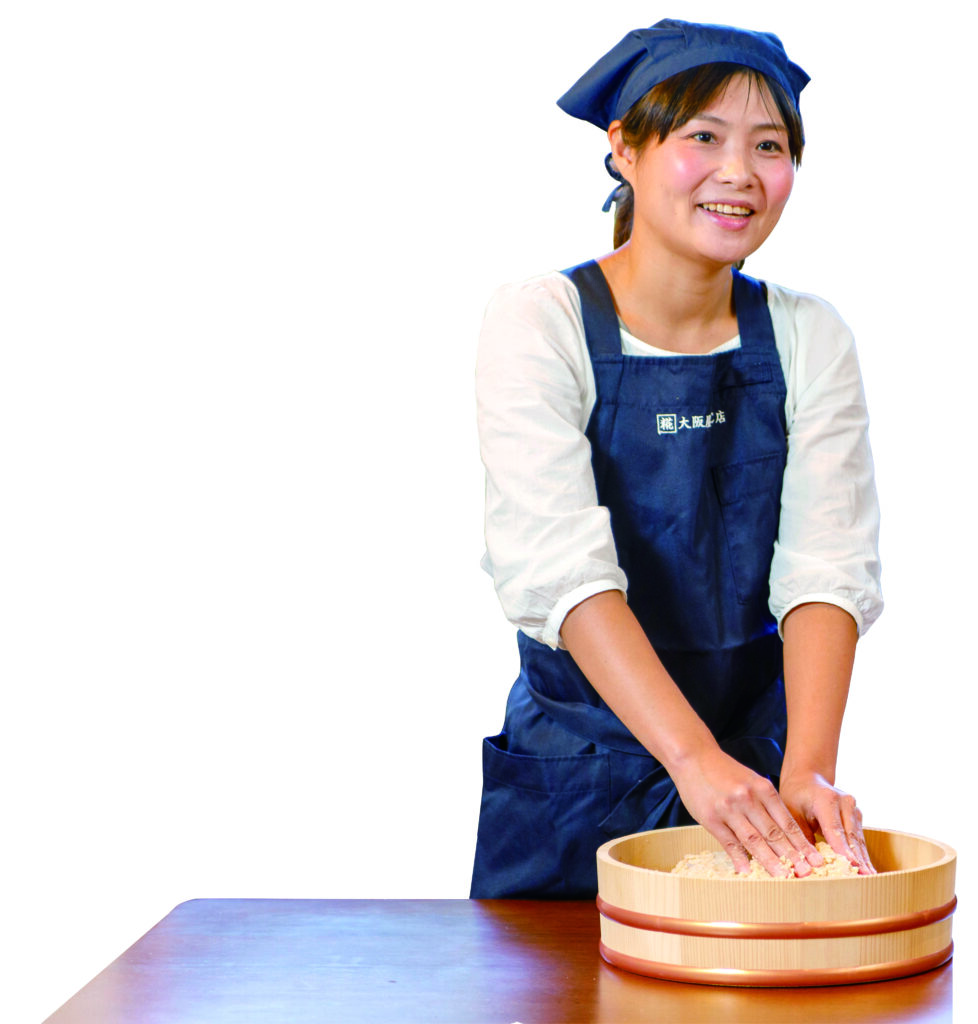
To make a 2 kg batch of basic miso, you will need 500 g of dried soybeans, 1 kg of fresh rice koji, and 260 g of natural salt. We recommend using Osakaya’s Kyo-shiromiso Set (2,300 yen); It’s a handy kit to make sweet shiromiso (white miso), but simply doubling the amount of salt is all it takes to make a batch of standard miso like that pictured above.
1.
Rinse soybeans and soak them overnight in water. Pour the soybeans and water into a pot. Cook for 10 min. in a pressure cooker and allow it to release pressure naturally for 10 min. Alternatively, use a regular pot, and simmer from 4 to 5 hours on low heat. Add some water as needed to avoid burning the beans.
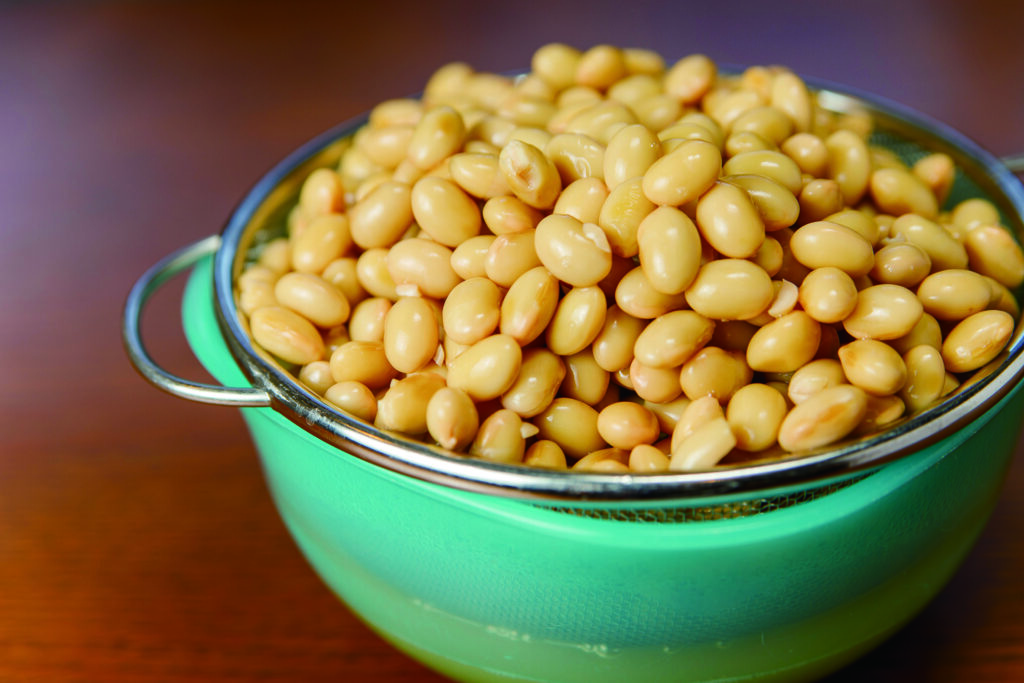
2.
Mix kōji and salt with your hands.

3.
Mix the boiled soybeans with (2). You can mash them first for a smoother texture.
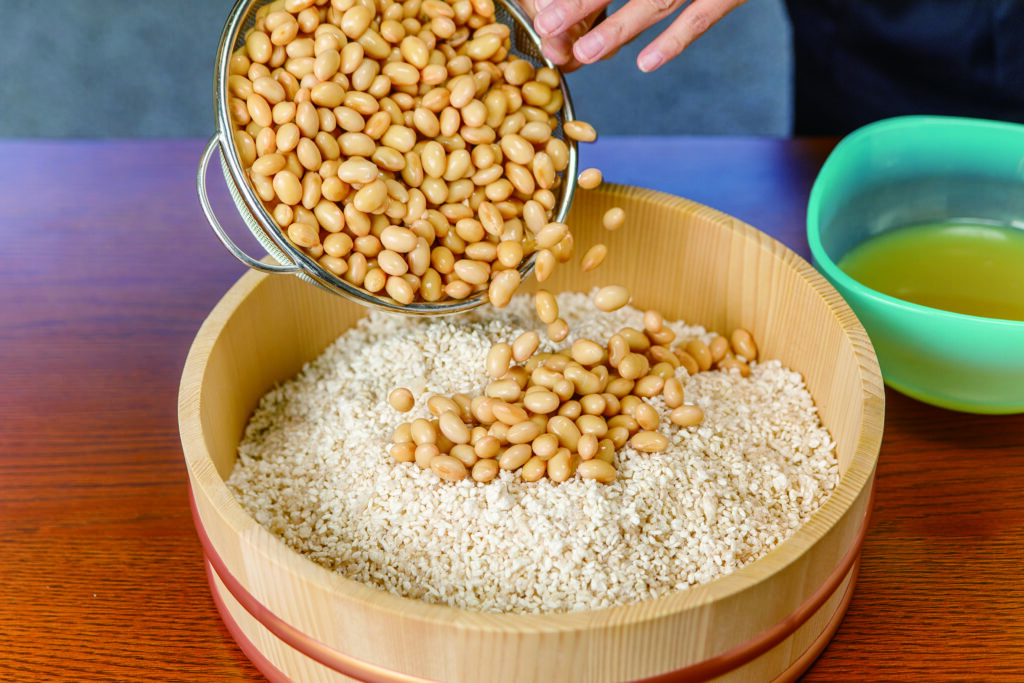
4.
Mix well and smooth out any lumps.
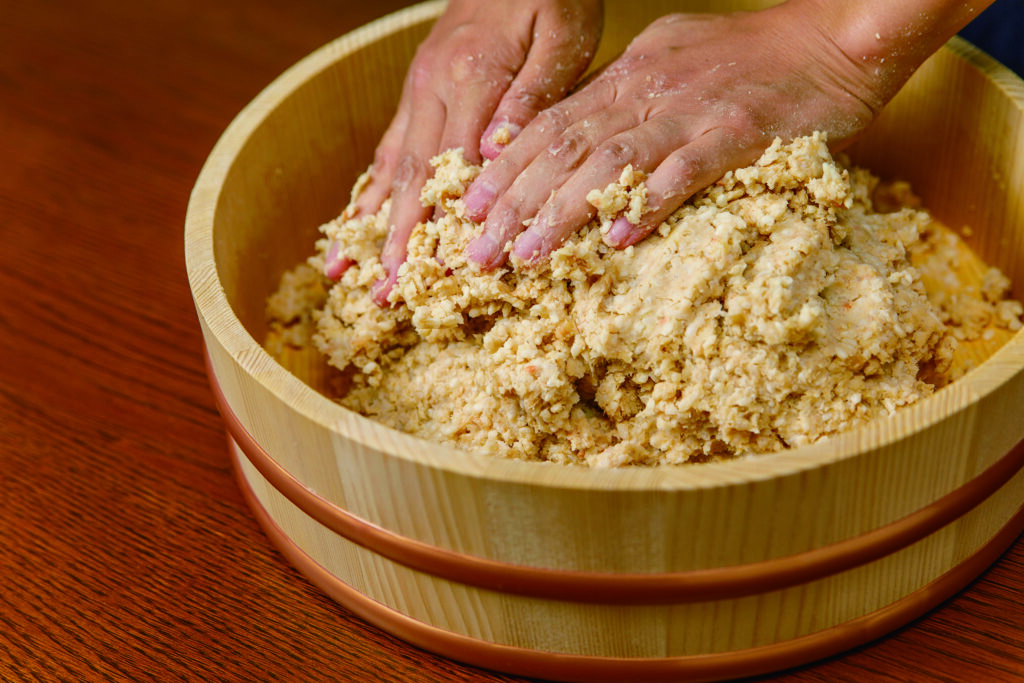
5.
Add 100 ml of the soybean broth and mix once again until the mixture is “soft as earlobes”.
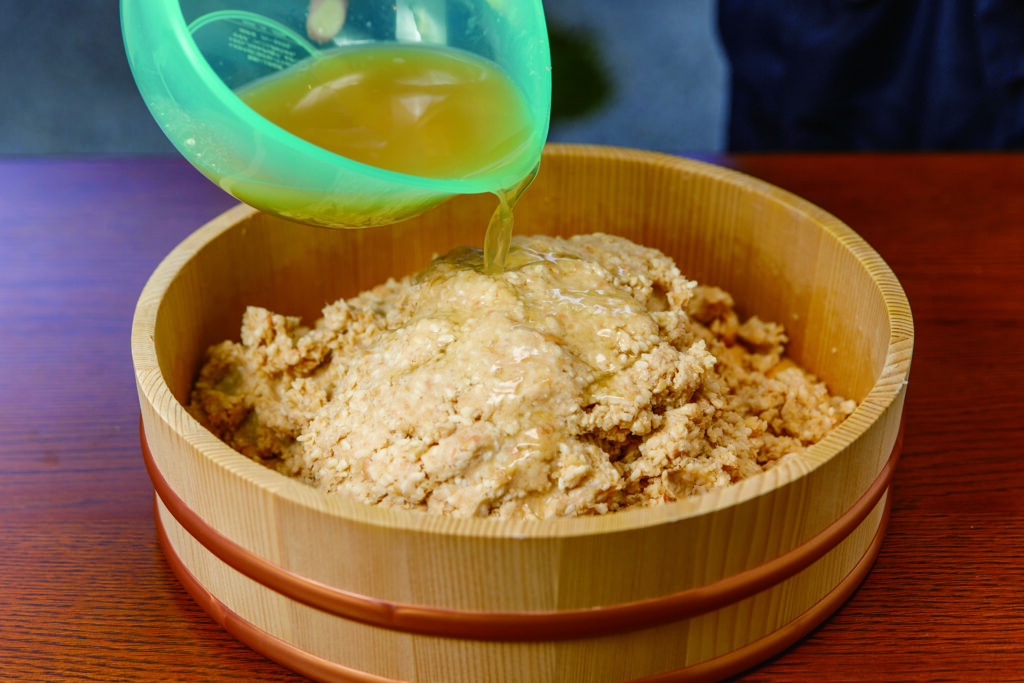
6.
Pack the mixture in a storage container, tightly pressing it down with your fist to eliminate air pockets and prevent unwanted bacterial contamination.
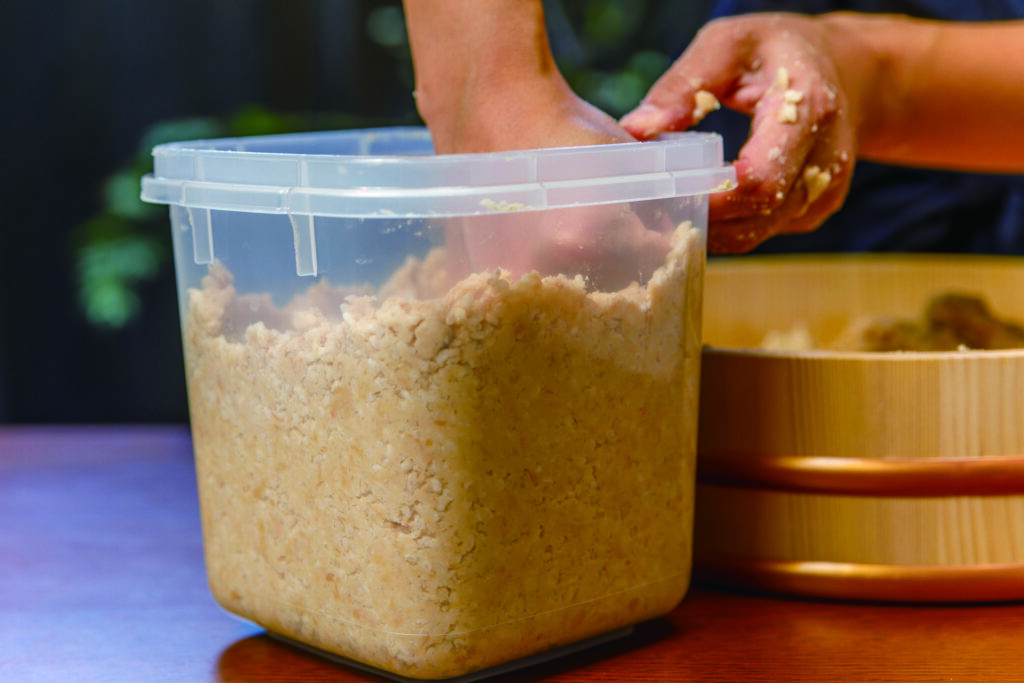
7.
Sterilize the surface of the mixture and the rims of the container with alcohol, then lay cling wrap over your miso-to-be. Close the lid and let it sit in a dark, cool place for about 10 months.
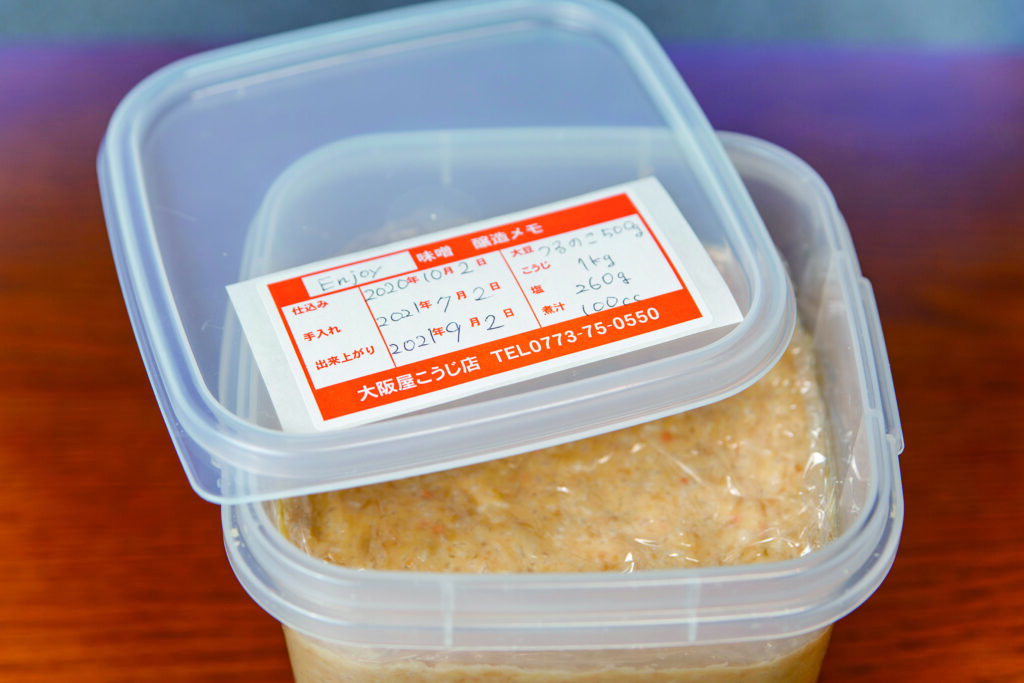

To ensure that your miso matures evenly, stir it just before it’s done. In the meantime, check every 3 months to see if there’s any mold growing. If so, remove it, and sterilize that area with alcohol.
Ōsakaya Kōjiten – Sanjo-jingumichi store

Address: 京都市東山区三条通神宮道東入ル中之町181
Open: Shop 12 pm – 5 pm, Café 12 pm – 4:30 pm (last orders at 4 pm)
Closed on Monday (except for national holiday)
- Business hours are shortened due to COVID-19
- Open every day in November.
www.namakouji.com
Items are also available online

